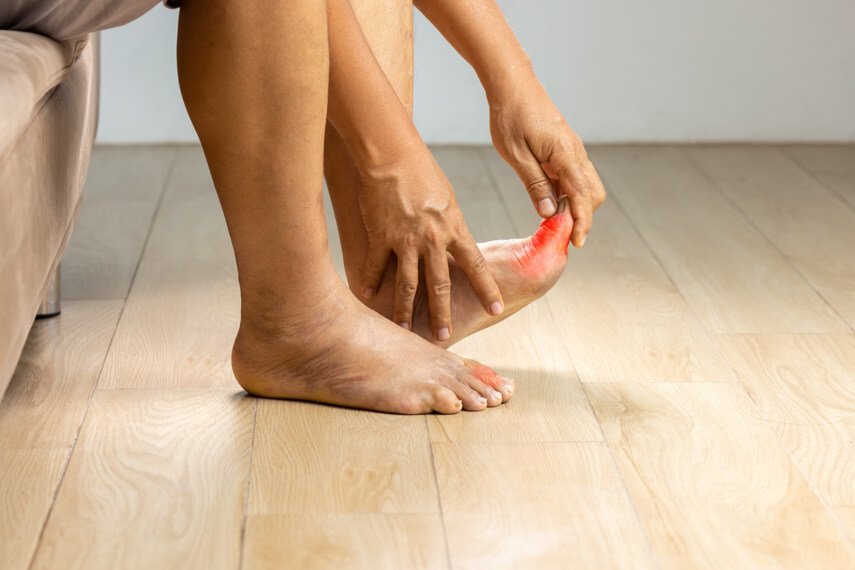Comprehensive Guide to Managing Diabetic Foot Ulcers
In Surat, Gujarat, as in many parts of the world, diabetes is a common health concern that can lead to serious complications, including diabetic foot ulcers. These wounds, occurring in diabetic patients due to reduced blood flow and nerve damage in the feet, can become complex health issues if not managed properly. Understanding the significance of specialized care for such conditions is crucial not only for healing but also for preventing severe consequences like amputation.
Understanding Diabetic Foot Ulcers
Diabetic foot ulcers are open sores or wounds that typically develop on the feet of people with diabetes. They are primarily caused by high blood sugar levels damaging nerves (neuropathy), which results in reduced sensation, and poor circulation that impedes healing.
Causes and Risk Factors
The primary culprits behind these ulcers include:
Neuropathy: Loss of sensation means minor injuries may go unnoticed.
Poor Blood Circulation: Impaired blood flow slows down the healing of any wounds.
Foot Deformities and Pressure Points: Calluses or bunions can exert extra pressure, leading to ulcers.
Ill-Fitting Shoes: Shoes that do not fit well can cause rubbing or pinching.
Poor Hygiene and Foot Care: Neglecting foot care can lead to conditions that promote ulcer development.
Statistics
Data indicates that about 15-25% of diabetics will develop a foot ulcer at some point, making proactive foot care and regular medical checks essential components of diabetes management.
Reference : https://www.ncbi.nlm.nih.gov/books/NBK537328/
Diabetic foot ulcers were found in 4.54% of patients newly diagnosed with type 2 diabetes mellitus in India; of these, 46.1% had neuropathic, 19.7% had ischemic, and 34.2% had neuroischemic foot ulcers.
Symptoms and Early Detection
Common Symptoms
Early signs of diabetic foot ulcers include:
1. Swelling, redness, and warmth around a part of the foot.
2. Drainage from the foot, possibly staining socks or leaking onto the floor.
3. A noticeable foul odour from one or both feet.
The Critical Role of Early Detection
Early detection plays a decisive role in of the successful treatment of foot ulcers, significantly reducing the risk of infection and amputation. Regularly inspecting the feet for any abnormalities can catch issues before they become severe.
1. Preventive Measures
2. Daily Foot Care Routines
3. Daily foot care should include:
4. Inspecting feet daily for cuts, blisters, redness, or swelling.
5. Washing feet daily in lukewarm water and drying them thoroughly, especially between the toes.
6. Moisturizing feet but not between the toes to avoid fungal infections.
7. Cutting nails straight across to avoid ingrown toenails.
Importance of Regular Check-Ups
Regular check-ups with healthcare professionals can catch foot problems early before they turn into severe complications. Diabetics should have their feet checked at every health visit, and at least once a year have a comprehensive foot exam.
1. Comprehensive Treatment Approaches for diabetic foot
2. Medical Treatments
Non-surgical management includes:
Antibiotics: To treat and prevent infection.
Advanced Dressings: To keep the wound moist and promote healing.
Off-loading: Using foot supports to relieve pressure on the ulcer.
Advanced Wound Care Techniques
Technological advancements in wound care include:
Negative Pressure Wound Therapy (NPWT): Helps reduce swelling and promotes tissue growth.
Skin Substitutes: These are used when standard wound care isn't enough to heal an ulcer.
Surgical Interventions
Sometimes, to prevent further deterioration, surgical intervention might be necessary:
Debridement: Removal of dead skin and tissue.
Revascularization: Procedures to improve blood flow to the feet.
Amputation: As a last resort, to remove the part of the foot or leg that is severely infected.
Innovations in Diabetic Foot Care
Recent innovations in diabetic foot care include new diagnostic tools, better surgical techniques, and novel wound-healing products that have significantly improved the management of diabetic foot ulcers.
Diabetic Foot Treatment Results Photo Gallary
https://www.suratdiabeticfootcare.in/photo/
Conclusion
Managing diabetic foot ulcers effectively involves understanding the condition, early detection, preventive care, and using both traditional and innovative treatments to ensure the best possible outcomes. The dedication to specialized care is vital to prevent complications.
For residents of Surat, Gujarat looking for expert care for diabetic foot ulcers, visit the Surat Diabetic Foot and Ulcers Clinic. Connect with us easily through our convenient WhatsApp service for any inquiries or to book an appointment. Your health is our priority, and we are equipped to provide you with the best possible care. Start your journey towards better foot health today



.jpg)
